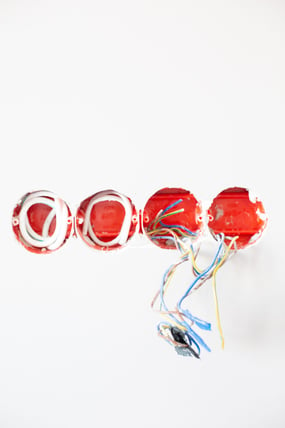Smart construction is gaining traction in the construction industry with the innovations and advancements of SMART Technology. Self-Monitoring Analysis and Reporting Technology isn’t all that new, we’ve had smart watches and smart devices in our homes for several years now. But as this technology advances and changes, integrating those changes during the building process is becoming more common. Many people consider the biggest factor in constructing the foundation of a smart building to be cabling. Cabling can be the foundation of any smart building. It must be done properly, using the right techniques and processes, in order for a smart building to function according to its design.
“Smart buildings can only be smart if all digital organs can communicate with each other without any barriers. This is something pointed out by Reichle & De-Massari (R&M), the globally active developer and provider of cabling systems for high-quality network infrastructures, based in Wetzikon, Switzerland. In a recent statement, R&M emphasizes: “The idea of the smart building is based on a uniform nerve structure and a common language in the form of structured cabling for data networks and the Internet Protocol.”
R&M further argues, “Uniform, application-neutral and manufacturer-independent connectivity can replace what has to date been the standard separation of IT and field bus components. The whole building is then speaking one language. Furthermore, this simplifies installation and maintenance. Material and operating expenses decrease.”
This sentiment is echoed by Haas Entertainment, which has great information about pre-wiring for a home or building. Whether the plan is be a smart home or not, having a building wired for the possibility is a huge step in the right direction. It creates added value because whomever ends up as the tenant at least has the option to add that functionality. They also add that planning where outlets will be aids in this process as well, plus wiring for touchscreen panels.
For larger buildings, smart cabling gets a little more complicated. You have many floors and a lot more surface area to consider. Pre-wiring is still important, but it takes on a different form in this instance than in a residence or smaller office building. Large buildings present their own unique set of obstacles and challenges to overcome, like using universal connectivity grids or zoning schemes. Versa Technology highlights the differences between UCG and Zone cabling, and discusses how to overcome some of the obstacles.
The biggest thing to learn before you begin wiring your next project is that forward-thinking is vital to building sustainability. Digitalization is becoming more and more common. Humans have more of a desire to reduce waste and be more energy efficient, all of which are provided with smart construction and smart buildings.
Think about where technology was even five years ago and where it is today. Then try to think about where it will be in the next 5-10 years. That’s what you want to wire for, that’s the cabling you need to install in your buildings. The less work a tenant or a prospective buyer has to do to make the building accommodate their needs, the more value that building has. This should return a bigger profit on your investment, which, at the end of the day, is the ultimate goal.

Recent Posts
- Spec Home Loans: Complete Guide to Construction Financing for Builders
- Spec Construction Loans: A Spec Line of Credit Is Worth the Paperwork
- Spec Homes and Pre-Sale Homes: Relative Benefits for a Spec Builder
- Spec Construction Success: Insights for the Investor Builder
- How Is a Spec House Different From Other Kinds of House Construction?
